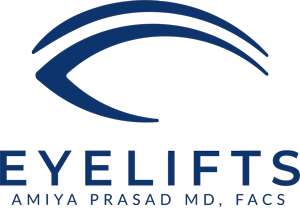Dysport
Dysport (abobotulinumtoxinA) is a prescription medicine that is primarily used to treat cervical dystonia and upper limb spasticity. The drug’s desired effect is to cause botulism, wherein the muscles’ nerve activity is blocked, thus limiting its mobility for a certain amount of time.
The botulism effect allows Dysport to be used for cosmetic purposes as well. The drug can be injected into specific muscles on the face, more often on the area between the eyebrows where moderate to severe frown lines can develop. These frown lines are called glabellar lines, and often come about due the repetitive contractions of the muscles in that area.
Using Dysport on this area has been shown to deliver temporary improvements in adults younger than 65 years of age when it comes to addressing moderate to severe frown lines by blocking the signals to the nerves and provisionally paralyzing the muscles that are responsible for creating them.
Reasons for Dysport Treatment
One of the more common types of wrinkles that can form on our faces is the frown lines between the eyebrows, or what is also referred to as glabellar lines. These lines form when we scrunch the eyebrows together in situations where we are angry or deeply focused.
The frequent tightening of the same muscle over and over again is often done unconsciously and leads to the formation of permanent frown lines. These can make a person appear older than they actually are, and can also make one appear angry or stern. Dysport treatment helps by weakening and relaxing the specific muscles that cause the frown lines, and alleviates the wrinkles, improving overall appearance and softening expressions.
The Benefits of Dysport
- Dysport is a non-surgical treatment, and therefore there is no downtime involved after having a treatment session.
- The results obtained are natural-looking and can be repeated after a certain amount of time while still producing the same results.
- Dysport treatment is very quick, usually lasting about 10 minutes a session.
- Muscles in the surrounding areas of the treatment site that have not been injected with Dysport will still contract normally, allowing you to still be able to convey natural-looking facial expressions.
Dysport Treatment Procedure
A syringe of Dysport is directly injected into 5 specific points between and above the eyebrows. The advantage of this treatment is that only specific muscles can be targeted via these few strategically placed injections; however, your attending physician must be able to accurately target these areas as the margin of error is quite small.
The Importance of Seeking a Skilled Professional
It must be understood that Dysport actually disperses a bit farther from the injection site (around 1-3 centimeters away), compared to other similar injections such as Botox. This means that, on a positive note, a patient will need fewer injections; however, on a negative note, there is a possibility that other nearby muscles not involved in the treatment may become affected by the injection if your attending physician is not skilled at administering the drug.
This is why Dr. Amiya Prasad, an Oculoplastic surgeon with over 20 years of experience, emphasizes the importance of seeking a skilled professional who not only has a significant amount of experience performing such procedures, but also to seek one who can treat the procedure with delicacy and artistry needed to produce beautiful and natural-looking results.
After Dysport Treatment
After Dysport is successfully administered into the correct muscles, patients should be able to see results within 1 to 7 days after treatments, with most seeing results in 3 days. Since Dysport contains significantly less protein than Botox does, the drug will be broken down more slowly, thus allowing it to remain effective for up to 4 months. Keep in mind that patients should not be treated with Dysport more frequently than every 90 days, and that pregnant women are completely advised against having Dysport treatment.
Other Precautions to Consider Before Dysport Treatment
People with any of the following conditions should seriously reconsider having Dysport treatment:
- Facial muscle weakness (any droopiness of facial muscles)
- Problems with breathing or swallowing
- Seizure disorders
- Bleeding problems
- Diabetes
- Heart disease
- Lou Gehrig’s disease
- Lambert-Eaton syndrome
- Myasthenia gravis
Eyelid surgery specialist and Oculofacial plastic surgeon Dr. Amiya Prasad offers Dysport treatment in both his New York and Long Island clinics. Before making a decision or committing to any treatments, consider having a personal evaluation with Dr. Prasad to determine the most appropriate procedure(s) for your specific case. You may reach us at our Manhattan office at (212) 265-8877 or our Garden City, Long Island office at (516) 742-4636. Our lines are open 24 hours a day, 7 days a week.
